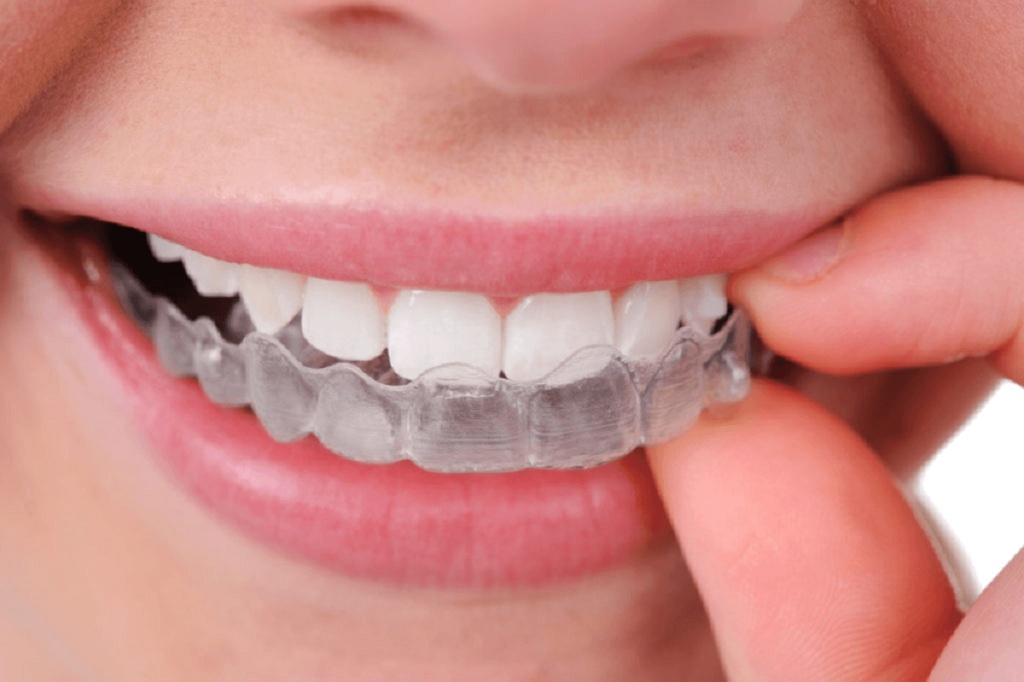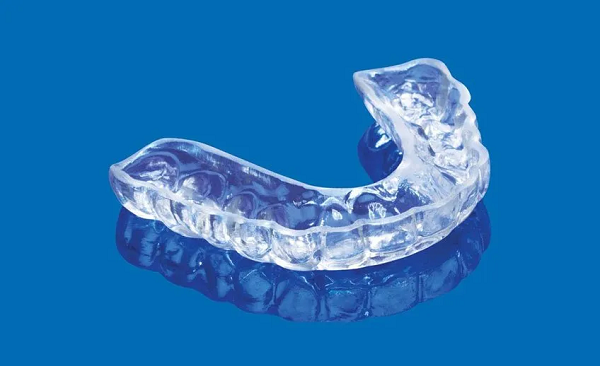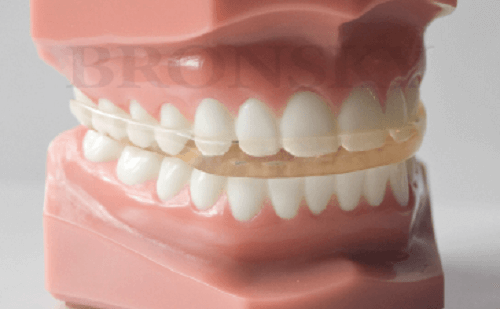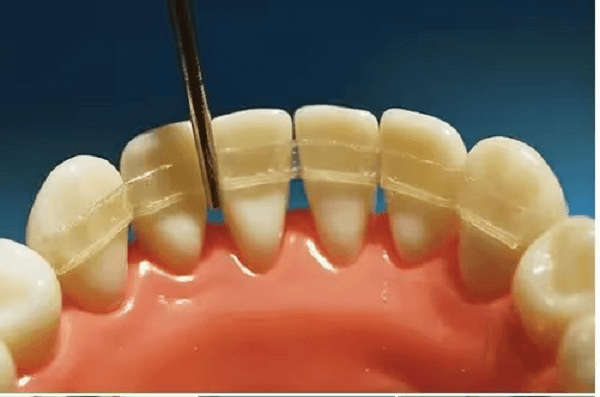Taking care of your teeth doesn’t only involve brushing and flossing. Sometimes you require extra care for your teeth. For instance, your dentist may prescribe a dental splint if you have loose teeth or jaw ache. A dental splint is a dental device utilized to protect your teeth and jaw from a number of issues, including grinding of your teeth and (TMJ) disorders. This guide will help you to know the types, benefits, and care of splint dental. Let’s understand how they work and why they might be the best treatment for you.

What is a dental splint ?
A dental splint is an oral device used to support, stabilize, or protect teeth.
It helps in various conditions such as:
- Bruxism (tooth grinding)
- Temporomandibular joint (TMJ) disorders
- Loose teeth due to gum disease
Splints are custom-made to fit your teeth perfectly, and they are comfortable and effective. Some splints stabilize teeth, and some restrict unwanted jaw movements. If you have been recommended for dental splinting, you need to understand how it can improve your oral health.

Types of Dental Splints
Dental splints also come in various forms, each of which has uses in different conditions. Below is a summary of the most common types:
Occlusal Splints
Occlusal splints are designed for patients who grind or clench their teeth while sleeping. The condition is known as bruxism and can lead to worn teeth, jaw pain, and headaches. The splint acts as a shield between the upper and lower teeth, and it protects them from harm and reduces the tension in the jaw muscles.
Orthodontic Splints
Orthodontic splints hold teeth in place after orthodontic dental treatment. You will typically be given these splints after the extraction of your braces to:
- Hold teeth in new position
- Halt movement while bone and tissue adjust
- Provide protection during stabilization
Your orthodontist can recommend full-time wear initially, then gradually transition to nighttime use only.

Mouth Guards
Athletic mouthguards are dental splints used specifically for sports. They are important in protecting by:
- Distributing impact forces in contact sports
- Preventing teeth from chipping, cracking, and loss
- Decreasing risk of jaw fractures and concussions
- Protecting dental work such as braces
Custom-fitted mouthguards from your dentist are more protective and comfortable than those available over-the-counter
Anti-snoring Splints
Some dental splints are specifically created to help with snoring and small sleep apnea. Anti-snoring splints dental work by moving the jaw position forward a little bit, which keeps the airway open during sleep. A very small movement can significantly enhance sleep quality and reduce snoring.
Whitening Splints
Whitening splints, also referred to as bleaching trays, are used for home teeth whitening treatments.
Whitening splints have a double advantage:
- Maintain whitening gel in contact with your teeth to whiten them properly
- Protect your teeth from grinding if worn at night
TMJ Splints
TMJ splints are created to treat temporomandibular joint disorders.
These dental splints:
- Relaxes jaw muscle tension
- Eases TMJ pain and discomfort
- Prevent teeth clenching and grinding
- Restores normal jaw function
Treatment with TMJ splints typically eases headaches, facial pain, and chewing difficulty that are associated with TMJ disorders.
Benefits of Dental Splints
Using a dental splint has several advantages based on the disorder for which it is prescribed. The major benefits include:
- Stabilization of Loose Teeth: If you’re prescribed a dental splint for loose teeth, the splint provides the necessary support to prevent further loosening.
- Protection Against Teeth Grinding: Occlusal splints shield your teeth from damage caused by excessive grinding.
- Reduced Jaw Pain and Headaches: Many people with TMJ disorders experience relief from pain and tension after using a splint.
- Prevention of Tooth Movement: Orthodontic splints prevent your teeth from shifting after braces, maintaining long-term outcomes.
- Improved Oral Health: dental splint s prevent harm and excessive force on the teeth, which improves overall oral health.

Steps of Getting Dental Splints
In case your dentist has prescribed a splint dental, here’s what you need to follow in the procedure:
1. Initial Consultation:
Your dentist will check your symptoms, look for signs of wear on your teeth, and review your jaw function.
2. Impressions:
If a dental splint is prescribed, your dentist will make accurate impressions of your teeth in order to have a custom-made device.
3. Making dental splint :
Your impressions are taken to a dental laboratory where technicians fabricate your custom-made splint using quality materials.
4. Fitting and Adjustments:
Your dentist will ensure the splint fits comfortably and make necessary adjustments.
5. Usage Instructions
You’ll receive guidance from your dentist on how and when to wear your splint for maximum effectiveness.
How to Take Care of Dental Splints
Proper care is essential to keep your splint clean and functional. Here’s how to maintain it:
- Clean Daily: Clean your splint with lukewarm water and a soft toothbrush. Do not use toothpaste, as it is too abrasive.
- Use a Cleaning Solution: Soak your splint in a dentist-recommended cleaning solution to avoid bacterial accumulation.
- Store Properly: Store your splint in a dry, well-ventilated case when it’s not in use to prevent contamination.
- Avoid Heat Exposure: Never expose your splint to hot water or sunlight, as it will distort the material.
- Check for Damage: Periodically check your splint for cracks or wear and replace it if necessary.
FAQs Related to Dental Splints
Can a dental splint be repaired?
Yes, a dental splint can be repaired based on the level of damage. Loose parts or cracks that are minor can be repaired by a dentist with dental adhesives or simple adjustments. If the splint has suffered extensive damage or is worn out, though, it might require replacement.
Can you eat with a dental splint ?
It is not advisable to eat when wearing a dental splint . Eating with a splint may cause damage, discomfort, or even misalignment. If it is essential, take it off before eating and clean it before putting it back on.
How does a dental splint work?
A dental splint stabilizes jaw and teeth by redistributing pressure and restricting movement. It minimizes strain due to conditions such as loose teeth, bruxism, and TMJ disorders. It keeps teeth fixed in position, thus preventing damage and encouraging healing.
How to clean dental splint ?
Rinse it with lukewarm water after every use. Use a soft toothbrush and mild soap or non-abrasive cleaner to scrape off plaque. Never use hot water as it warps the material.
How to remove dental splint ?
Loosen the splint gently by wiggling it from the sides. If it is cemented, have it professionally removed by a dentist. Never force it out to prevent damage.
Conclusion
Including a dental splint in your oral care can dramatically improve dental health through stabilizing the teeth and relief from pain. When considering dental solutions, you should rely on quality materials and equipment. Aidite is an international integrated dental solution company specializing in researching, developing, manufacturing, and serving dental materials and equipment. With their passion for innovation and quality, they have become a reliable partner for dental professionals across the globe. By selecting products from reliable suppliers such as Aidite, you can be certain that your dental treatments will be both efficient and long-lasting.



